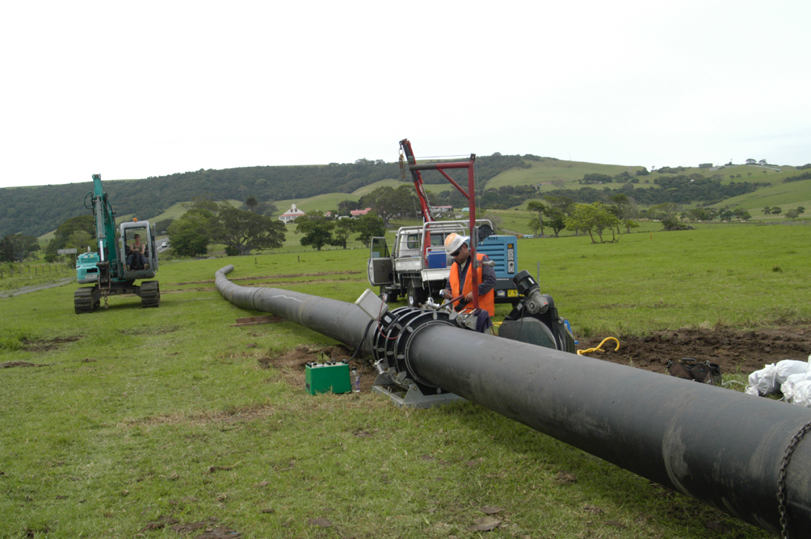PE pipes are now on the market, and are already a very familiar product, especially those in the industry. When PE pipes are mentioned, they immediately think of wear resistance, pressure resistance, corrosion resistance and long service life. There are many PE pipes. Types, raw materials PE are also divided into many types, the produced PE pipe products are also divided into many types, today’s more detailed comprehensive explanation, what is the difference between the standards of PE80 pipe and PE100 pipe?
PE material is polyethylene, which is a variety of plastic materials. It is a polymer material synthesized from polyethylene.
Basically divided into two categories: low density polyethylene LDPE (lower strength); high density polyethylene HDPE. PE materials are divided into five grades according to the international unified standard: PE32 grade, PE40 grade, PE63 grade, PE80 grade and PE100 grade.
The production of PE pipes for water supply pipes is high-density polyethylene (HDPE), and its grades are PE80 and PE100 (according to the abbreviation of Minimum Required Strength, MRS). The MRS of PE80 reaches 8MPa; the MRS of PE100 reaches 10MPa. MRS refers to the hoop tensile stress strength of the pipe (calculated value tested according to international standards).
PE80 (8.00~9.99Mpa) is a masterbatch with antimony trioxide content of 80% on polyethylene substrate, which can be mainly used in casting and film making at the same time. It is a granular free-flowing dust-free masterbatch that is safer in production than traditional powders, easy to master the dosage, and is also considered a general-purpose masterbatch, which is free-flowing in granular form.
PE100 (10.00~11.19Mpa) is the number of grades obtained by rounding the minimum required strength (MRS) of polyethylene raw materials. According to GB/T18252, the hydrostatic strength of the material corresponding to 20℃, 50 years and predicted probability of 97.5% is determined according to GB/T18252. σLPL, convert the MRS, and multiply the MRS by 10 to get the classification number of the material.
If pipes and fittings produced from different grades of polyethylene raw materials are to be connected, the joints shall be subjected to a hydraulic test. In general, PE63, PE80, PE100 mixtures with melt flow rate (MFR) (190°C/5kg) between 0.2g/10min and 1.3g/10min should be considered to be mutually fused and can be connected to each other. Raw materials outside this range need to be tested to determine.
1. What is PE100 polyethylene pipe?
The development of polyethylene pipe materials is recognized as being divided into three generations, namely three development stages:
The first generation, low-density polyethylene and “type one” high-density polyethylene, have poor performance and are equivalent to the current polyethylene pipe materials below PE63.
The second generation, which appeared in the 1960s, is a medium-density polyethylene pipe material with high long-term hydrostatic strength and crack resistance, which is now called PE80 grade polyethylene pipe material.
The third generation, which appeared in the 1980s, is called the third generation polyethylene pipe special material PE100. PE100 means that at 20°C, the polyethylene pipe can still maintain the minimum required strength MRS of 10MPa after 50 years, and has excellent resistance to rapid crack growth.
2. What are the main advantages of PE100 polyethylene pipe?
PE100 has all the excellent properties of polyethylene, and its mechanical properties are significantly improved, which makes PE100 have many special advantages and is used in more fields.
2.1 Stronger pressure resistance
Because PE100 resin has a minimum required strength of 10MPa, it is much stronger than other polyethylenes, and gas and liquid can be transported under high pressure;
2.2 Thinner wall
Under normal operating pressure, the pipe wall made of PE100 material can be greatly thinned. For large-diameter water pipes, the use of thin-walled pipes can save materials and expand the area of the cross-sectional area of the pipes, thus increasing the transportation capacity of the pipes. If the conveying capacity is constant, the increase of the cross-section leads to a decrease in the flow rate, so that the conveying can be realized by a smaller power pump, but the cost is saved.
2.3 Higher safety factor
If the pipe is sized or the operating pressure is specified, the safety factor that PE100 can ensure is guaranteed in today’s various polyethylene piping series.
2.4 Higher hardness
PE100 material has an elastic modulus of 1250MPa, which is higher than 950MPa of standard HDPE resin, which makes PE100 pipe have higher ring stiffness.
3. Mechanical properties of PE100 resin
3.1 Lasting Strength
Enduring strength was determined by pressure testing the lines at different temperatures (20°C, 40°C, 60°C and 80°C). At 20℃, PE100 resin can maintain the strength of 10MPa after 50 years, (PE80 is 8.0MPa).
3.2 Good stress crack resistance
PE100 polyethylene pipe special material has good resistance to stress cracking, delaying the occurrence of stress cracking (>10000 hours), and it can even be delayed for more than 100 years under the condition of 20℃.
3.3 Significant resistance to rapid crack growth
The requirement for the ability to resist the rapid growth of cracks limits the use of traditional polyethylene pipes: for gas, the pressure limit is 0.4MPa, and for water delivery, it is 1.0MPa. Due to the remarkable ability of PE100 to resist the rapid growth of cracks, the pressure limit in the natural gas network is increased to 1.0MPa (1.2MPa has been used in Russia and 1.6MPa in the water transmission network). In a word, the application of PE100 polyethylene material in pipelines will ensure that the performance parameters of pe100 water supply pipes in the pipe network are safer, more economical and have a longer service life.
Reference:http://www.chinapipe.net/baike/knowledge/15022.html

Post time: Nov-04-2022




